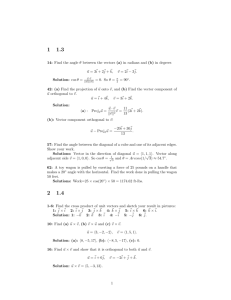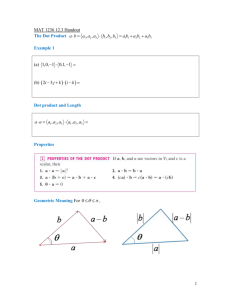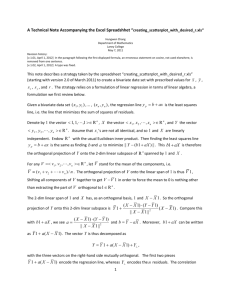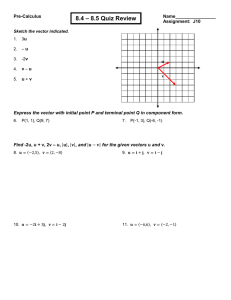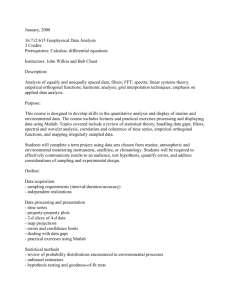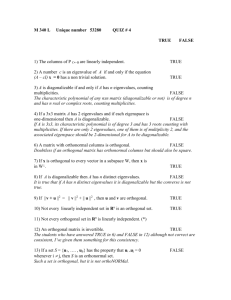MATH 3000--BRIDGE TO HIGHER MATHEMATICS
advertisement
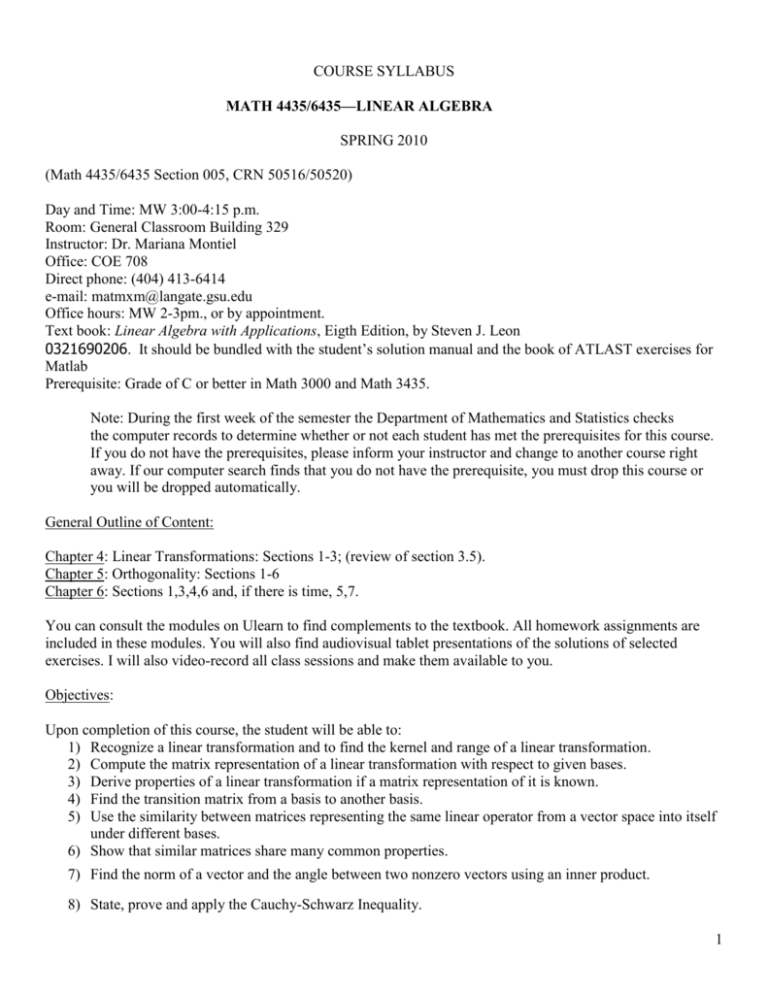
COURSE SYLLABUS MATH 4435/6435—LINEAR ALGEBRA SPRING 2010 (Math 4435/6435 Section 005, CRN 50516/50520) Day and Time: MW 3:00-4:15 p.m. Room: General Classroom Building 329 Instructor: Dr. Mariana Montiel Office: COE 708 Direct phone: (404) 413-6414 e-mail: matmxm@langate.gsu.edu Office hours: MW 2-3pm., or by appointment. Text book: Linear Algebra with Applications, Eigth Edition, by Steven J. Leon 0321690206. It should be bundled with the student’s solution manual and the book of ATLAST exercises for Matlab Prerequisite: Grade of C or better in Math 3000 and Math 3435. Note: During the first week of the semester the Department of Mathematics and Statistics checks the computer records to determine whether or not each student has met the prerequisites for this course. If you do not have the prerequisites, please inform your instructor and change to another course right away. If our computer search finds that you do not have the prerequisite, you must drop this course or you will be dropped automatically. General Outline of Content: Chapter 4: Linear Transformations: Sections 1-3; (review of section 3.5). Chapter 5: Orthogonality: Sections 1-6 Chapter 6: Sections 1,3,4,6 and, if there is time, 5,7. You can consult the modules on Ulearn to find complements to the textbook. All homework assignments are included in these modules. You will also find audiovisual tablet presentations of the solutions of selected exercises. I will also video-record all class sessions and make them available to you. Objectives: Upon completion of this course, the student will be able to: 1) Recognize a linear transformation and to find the kernel and range of a linear transformation. 2) Compute the matrix representation of a linear transformation with respect to given bases. 3) Derive properties of a linear transformation if a matrix representation of it is known. 4) Find the transition matrix from a basis to another basis. 5) Use the similarity between matrices representing the same linear operator from a vector space into itself under different bases. 6) Show that similar matrices share many common properties. 7) Find the norm of a vector and the angle between two nonzero vectors using an inner product. 8) State, prove and apply the Cauchy-Schwarz Inequality. 1 9) Find the distance between a point and a line (or plane) using orthogonal projection. 10) Compute the orthogonal complement of a subspace. 11) Show and utilize the fact that an inner product space can be written as the direct sum of any subspace and its orthogonal complement. 12) Find the best least squares fit by a linear (or quadratic) function to given data. 13) Recall some typical inner product spaces, such as the vector space of real continuous functions on a closed interval and the vector space of all polynomials in x of degree less than a fixed number. 14) Compute various norms that can be defined in a vector space. 15) Demonstrate that every orthogonal set of nonzero vectors is linearly independent. 16) Establish several conditions on a matrix, each of which is equivalent to it being an orthogonal matrix. 17) Apply the Gram-Schmidt orthogonalization process to find an orthonormal basis for an inner product space. 18) Compute the eigenvalues and eigenvectors of a matrix. 19) Determine if a given matrix is diagonalizable. 20) Show that the eigenvalues of a Hermitian matrix are real. 21) Demonstrate that a matrix is normal if and only if it is unitarily diagonalizable. 22) Use matrix diagonalization to rotate axes when working with conic sections and quadric surfaces. Grading Exams: 19% each, including the final,: Feb 8, March 15, April 5, April 26 (8); Matlab excercises: 5%. The Matlab excercises will be due the day of each exam. Final Exam: Wednesday May 5@2:45. 97 - 100 = A+ 93 - 97 = A 90 - 92 = A87 - 90 = B+ 83 - 87 = B 80 - 82 = B77 - 79 = C+ 70 - 76 = C 60 - 69 = D 0 - 59 = F Graduate students will have a question of a more advanced nature on each test. Missed exam policy: There will be no makeup exams except in extreme cases that MUST be justified. Missed exams will receive a grade of zero. Any conflicts must be worked out with me ahead of time. . 2 Homework policy: Homework will be assigned daily. It will not be graded, but the successful student is one who devotes regular time and efforts to working on the assigned problems, which means reading the textbook and class notes before beginning to actually do the problems. Graphing calculators (TI-83+, etc.) are welcome, can be used in class, for homework, and on exams, and students are encouraged to make use of computer algebra programs. Attendance policy: Come to class on time and do not leave early. Anything else is rude and disruptive. If for any reason the University is closed on an exam or quiz day, the exam or quiz will be given at the next regularly scheduled class meeting. A student is responsible for all material covered in class, whether he or she attended the class. The instructor may drop a student from the roll for exceeding three class absences. Any student who does not complete the course for any reason must officially withdraw from the course or will be awarded a grade of F. Classroom Policy: Please refrain from using cell phones and laptops in the classroom. The following policy applies to all courses in the Department of Mathematics and Statistics: If you do not attend class during the first week you will be administratively dropped. Administrative withdrawal--Students with excessive absences or students without the necessary prerequisites will be administratively withdrawn. Copied exam papers will not be accepted and will receive a grade of zero. See the University's policy on Academic Honesty: www.gsu.edu/~wwwdos/codeofconduct_conpol.html Disruptive behavior: See the University's policy on disruptive behavior: www.gsu.edu/~wwwsen/minutes/2002-2003/disrupt.html 3

